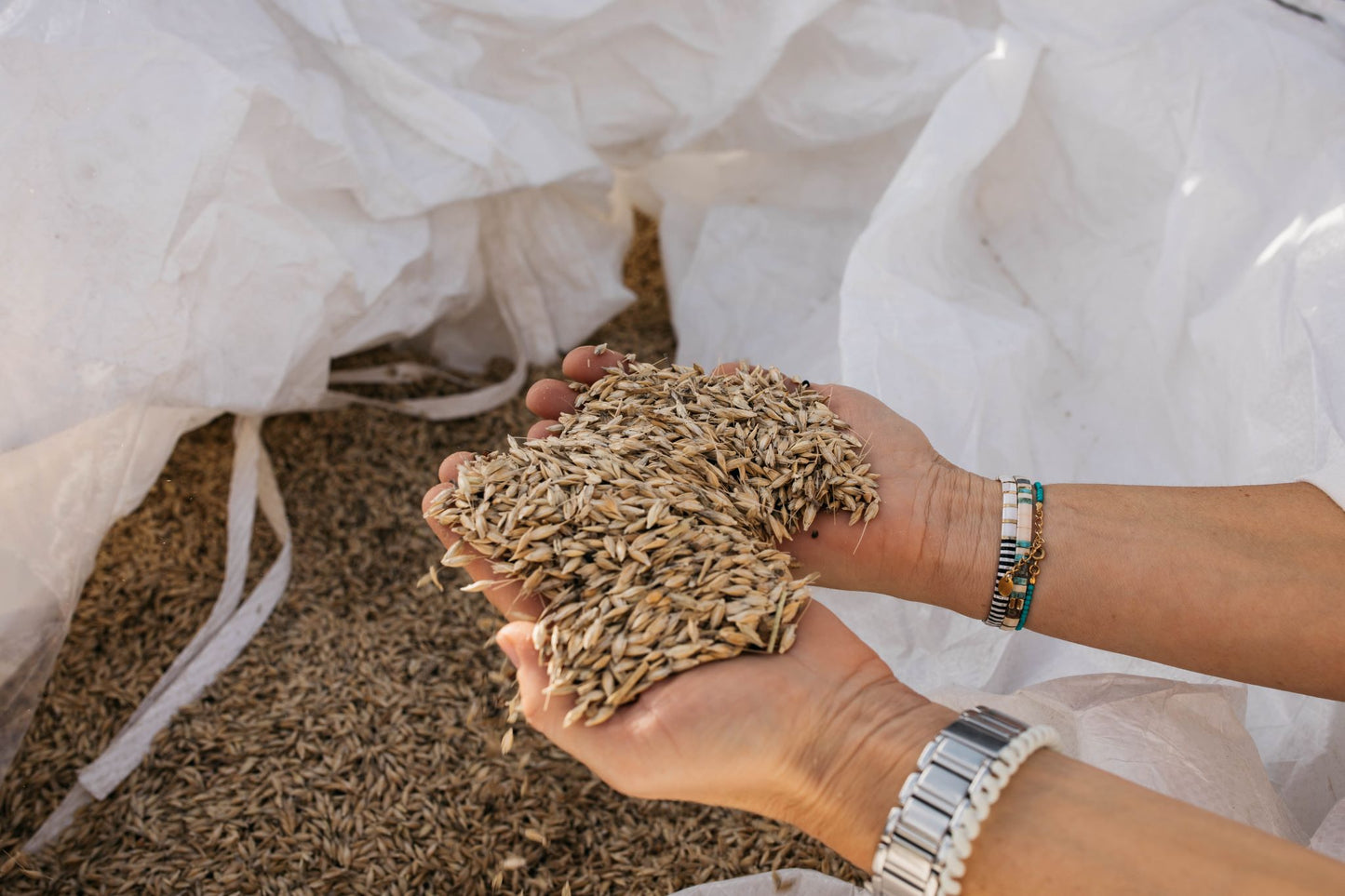Since the Revival Einkorn team is passionate about changing the way we eat by reviving the ancient food wisdom that the modern world left behind, it is fitting to start by looking way way back, about 12,000 years ago to be exact, into the history of human diets.
Where Did Wheat Come From?
Before humans began farming, they relied on what nature provided…wild game, fruits, nuts, seeds and whatever sustenance they could forage seasonally. While this was the only way of life for our early ancestors, a shift began once they observed that wild grasses produced seed that was highly favored by wildlife. These wild grasses naturally grew in abundance, even in the most arid of regions, sparking the first experimentation of cultivating crops. While farming these wild grasses, more specifically Triticum monococcum (hereafter ‘einkorn’), was the inception of a new era for humankind, their diets continued to rely on nature to provide sustenance and inspiration, pure and simple, but much has changed over thousands of years.
What we do know is that what we now call ‘wheat’ is NOT a direct descendant of these seeds that our hunter-gatherer ancestors stumbled upon, but rather a result of crossing different wild wheats with varieties of goatgrass. Ethnobotanist or not, it isn’t difficult to comprehend that what humans relied on thousands of years ago and what humans rely on in the 21st century, is remarkably incomparable on many levels.

What is the Difference Between Einkorn and Modern Wheat?
Wheat is one of the most historically significant plants in human history. Wheat as we now know it has become victim to hybridization and genetic engineering, coming at a unsustainably high cost to our health and the health of the planet. It is no surprise that approximately 30% of Americans now avoid wheat.
The glitch in this new dietary intolerance is that not all wheat was created equal! If it is modern wheat that Americans are intolerant of, then it is inarguably time to reframe our current unhealthy relationship with wheat and bring back the wheat that gave rise to agriculture as we know it, einkorn wheat.
It has become clear that einkorn is far superior to modern wheat varieties in every regard. Through the ages of modern agricultural advancements, einkorn was lost to the rush for greater yields. Though einkorn wheat has evolved over thousands of years, our bodies have only had a few decades to adapt to the modern wheat that has been radically hybridized over the last century. The hybridization of wheat has resulted in a main staple food that is nutritionally inferior, complex, indigestible and a far genetic stretch from what our ancestors discovered. With its unusually high content of beneficial micronutrients, einkorn outperforms modern wheat by a wide margin.
So, What Makes Einkorn So Easy to Digest?
What was gained in yields and productivity was lost in digestibility. The genetic purity of einkorn brings much to the table, contributing to gut health, rather than destroying the gut biome, like modern wheat.
Like all wheat, einkorn contains fructans, small carbohydrates, contributing to its prebiotic effect. These carbohydrate chains selectively promote the growth of the beneficial bacteria that live in the colon. While not all fibers have this prebiotic effect, the fructans found in einkorn directly impact the bifidobacteria and lactobacilli with their prebiotic effect. Research indicates that including einkorn into the diet could support a greater diversity of health promoting bacteria. An increase in specific species of intestinal bacteria helps maintain the intestinal mucosa and reduce inflammation.
In addition to promoting gut health, einkorn’s unique protein structure sets this heritage grain apart from other grains, including other ancient grains. These naturally occurring proteins, called ATIs, are highly resistant to digestion, constituting a portion of the protein content in common wheat as well as spelt and emmer. Einkorn flour is unique in its absence or minimal presence of these certain ATI molecules. With an inhibitory effect on enzymes that interfere with digestion, causing bloating, headache, chronic fatigue and more, it not surprising that modern wheat’s lack of digestibility is a result of radical hybridization of a once wild grain.
Conclusion
The purity of einkorn wheat has been sacrificed to feed a growing global population, but that is changing. Einkorn is arguably the best, and historically the most digestible wheat. With gluten intolerance and food diversity awareness on the rise, it’s time to bring the simplicity and digestibility of einkorn back to the table.
Looking for an exceptional source for real, fresh food straight from the Amish to your door? Please check out our friends at Miller's Bio Farm for the best selection of high quality foods! Inspiring healthy generations since 2009.



